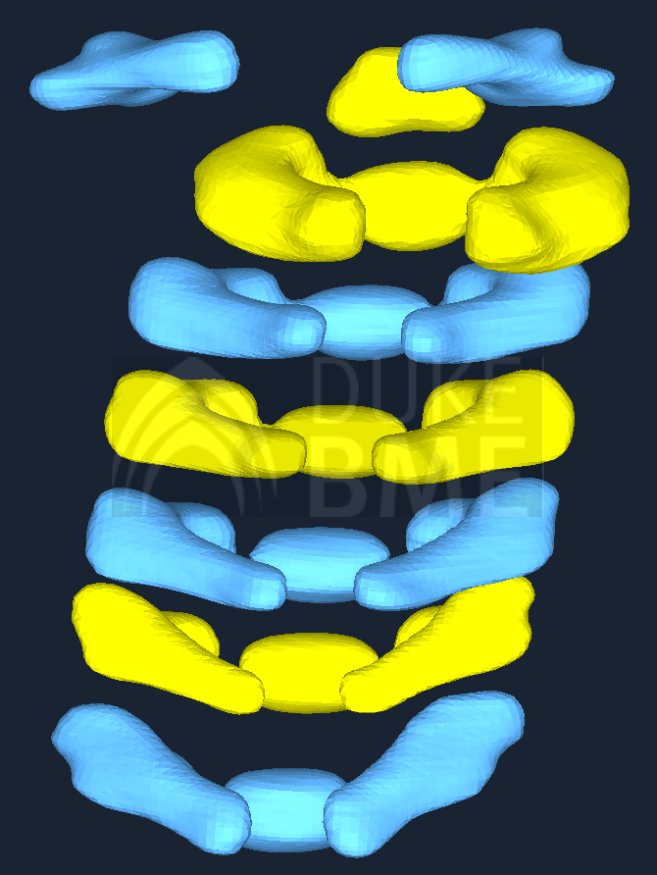The Injury and Orthopaedic Biomechanics Research Group at Duke University is currently focusing on three initiatives associated with the pediatric cervical spine. The first initiative involves research currently underway to provide a more comprehensive mechanical understanding of the developing cervical spine under defined loading conditions. Specifically, investigation of the mechanical response of the pediatric cervical spine to primarily tensile loading is underway. Data gathered from this research will provide structural properties, viscoelastic characteristics and tolerance limits for the developing cervical spine.
A second initiative focuses on the investigation of the constitutive or material properties of the cartilaginous growth regions in the pediatric cervical spine. These growth regions, typically referred to as synchondroses, due to their bone-cartilage-bone interface, provide the framework for growth in the developing vertebra. Synchondroses will be loaded under defined conditions, including tension and compression, to investigate the constitutive properties of the underlying cartilaginous region. Tolerance limits under tensile loading will also be investigated.
The third focus of the pediatric cervical spine relates to quantifying anatomical measurements and determining inertial properties. In order to quantify the anatomy of the pediatric cervical spine measurements are taken on the specimens. Secondly, high resolution CT scans are imported into AMIRA (Duke University Visualization Technology Group) for sectioning and meshing. Lastly the files are imported into Hypermesh (Altair Engineering) in order to get physical measurements and to determine inertial properites. (Images below are from Hypermesh)
Image

| Image

|